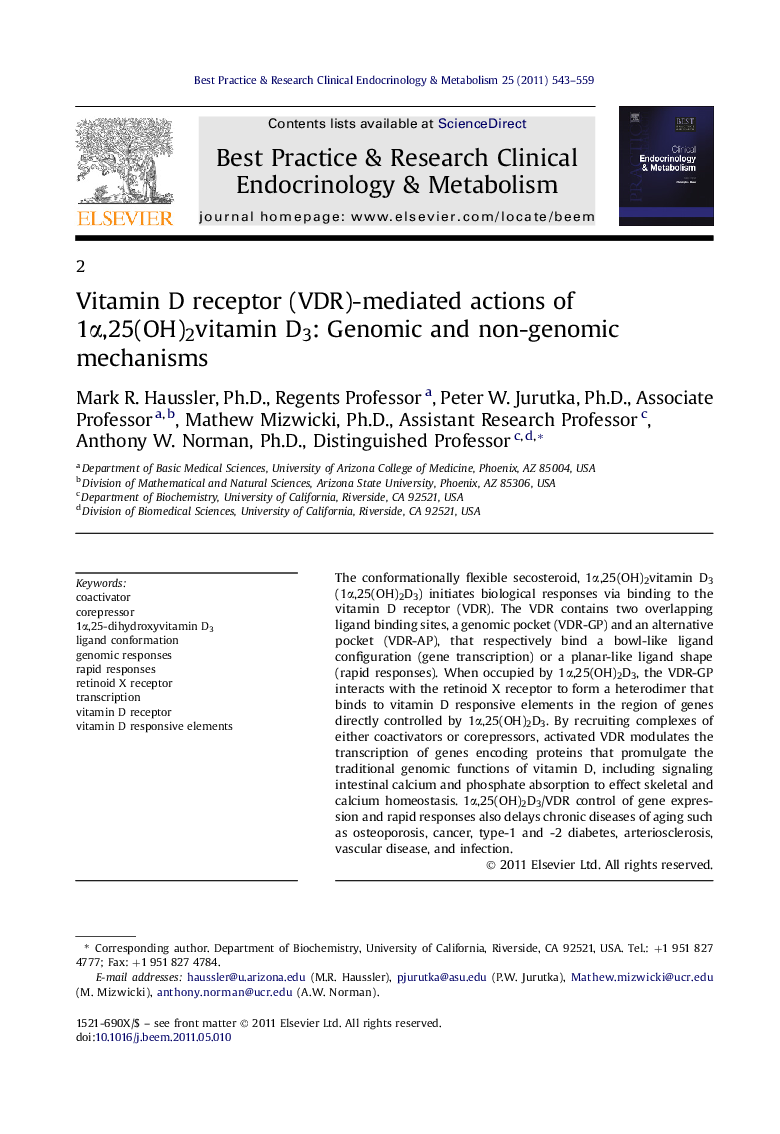| Article ID | Journal | Published Year | Pages | File Type |
|---|---|---|---|---|
| 2791963 | Best Practice & Research Clinical Endocrinology & Metabolism | 2011 | 17 Pages |
The conformationally flexible secosteroid, 1α,25(OH)2vitamin D3 (1α,25(OH)2D3) initiates biological responses via binding to the vitamin D receptor (VDR). The VDR contains two overlapping ligand binding sites, a genomic pocket (VDR-GP) and an alternative pocket (VDR-AP), that respectively bind a bowl-like ligand configuration (gene transcription) or a planar-like ligand shape (rapid responses). When occupied by 1α,25(OH)2D3, the VDR-GP interacts with the retinoid X receptor to form a heterodimer that binds to vitamin D responsive elements in the region of genes directly controlled by 1α,25(OH)2D3. By recruiting complexes of either coactivators or corepressors, activated VDR modulates the transcription of genes encoding proteins that promulgate the traditional genomic functions of vitamin D, including signaling intestinal calcium and phosphate absorption to effect skeletal and calcium homeostasis. 1α,25(OH)2D3/VDR control of gene expression and rapid responses also delays chronic diseases of aging such as osteoporosis, cancer, type-1 and -2 diabetes, arteriosclerosis, vascular disease, and infection.
